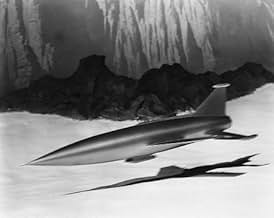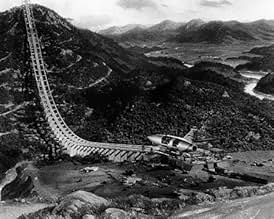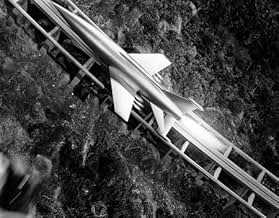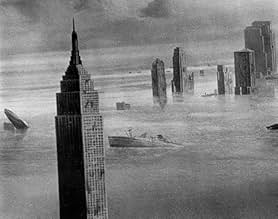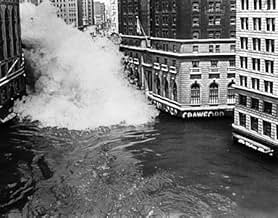ÉVALUATION IMDb
6,6/10
9,9 k
MA NOTE
Une collision imminente avec une étoile condamne la Terre à être détruite. Tandis que le jour de la fin du monde approche, une course contre la montre s'engage et ceux qui seront abandonnés ... Tout lireUne collision imminente avec une étoile condamne la Terre à être détruite. Tandis que le jour de la fin du monde approche, une course contre la montre s'engage et ceux qui seront abandonnés paniquent.Une collision imminente avec une étoile condamne la Terre à être détruite. Tandis que le jour de la fin du monde approche, une course contre la montre s'engage et ceux qui seront abandonnés paniquent.
- Director
- Writers
- Stars
- A remporté 1 oscar
- 2 victoires et 1 nomination au total
Peter Hansen
- Dr. Tony Drake
- (as Peter Hanson)
Rachel Ames
- Julie Cummings
- (as Judith Ames)
Kirk Alyn
- Rioter Bringing Guns
- (uncredited)
Gertrude Astor
- Traveler
- (uncredited)
Mary Bayless
- Club Patron
- (uncredited)
Nina Borget
- Translator
- (uncredited)
Steve Carruthers
- Delegate
- (uncredited)
Robert Chapman
- Student
- (uncredited)
Gene Collins
- Newsdealer
- (uncredited)
James Congdon
- Eddie Garson
- (uncredited)
Avis en vedette
First, this is a nice-looking film with a good DVD transfer. Seeing an early '50s sci-fi film Technicolor is nice.
Also, having just watched - I'm not kidding - "Plan 9 From Outer Space" and "Invaders From Mars," this George Pal film looked like multi-million dollar Oscar winner in comparison. Except for the ending scene, the special-effects were passable, the acting was good and the dialog pretty realistic. The story plausible? Of course not, but what they did know of space travel in 1951? Hell, we didn't send a man on the moon until almost 20 years after this movie. No, this is not one of those popcorn flicks that "is so bad, it's good" or just plaint stink. No, this movie is just good......period....even today, almost 57 years later!.
This was a no-nonsense survival story without an overdone corny romance, no stupid or obnoxious kids nor goofy-looking adults. It had a solid reverence for God and to science at the same time, a realistic portrayal of people under stress and how they would react knowing their world was coming to end. For a mostly talky film, it moved fast with few, if any lulls.
John Hoyt, who plays the wheelchair-bound millionaire "Sydney Stanton," may not be a "name" actor but he's very good. Check his resume: it's awesome. The man was in about every good television show for decades. The man could act. So did the rest of this cast.
Overall, this "modern" Noah's Ark story was a good one, and far, far better than your normal sci-fi flicks from the time period. Well done!
Also, having just watched - I'm not kidding - "Plan 9 From Outer Space" and "Invaders From Mars," this George Pal film looked like multi-million dollar Oscar winner in comparison. Except for the ending scene, the special-effects were passable, the acting was good and the dialog pretty realistic. The story plausible? Of course not, but what they did know of space travel in 1951? Hell, we didn't send a man on the moon until almost 20 years after this movie. No, this is not one of those popcorn flicks that "is so bad, it's good" or just plaint stink. No, this movie is just good......period....even today, almost 57 years later!.
This was a no-nonsense survival story without an overdone corny romance, no stupid or obnoxious kids nor goofy-looking adults. It had a solid reverence for God and to science at the same time, a realistic portrayal of people under stress and how they would react knowing their world was coming to end. For a mostly talky film, it moved fast with few, if any lulls.
John Hoyt, who plays the wheelchair-bound millionaire "Sydney Stanton," may not be a "name" actor but he's very good. Check his resume: it's awesome. The man was in about every good television show for decades. The man could act. So did the rest of this cast.
Overall, this "modern" Noah's Ark story was a good one, and far, far better than your normal sci-fi flicks from the time period. Well done!
George Pal, Hungarian born Puppetoon creator and fantasy legend made several great science fiction space movies. Adaptations of popular books in the 50's included former German rocket scientist Willy Ley's "Conquest Of Space" using designs and ideas illustrated by space artist Chestley Bonestell, who's work is seen in almost all of Pal's space films in one way or another, considered cutting edge for the time. His others included H.G.Wells classic "War Of The Worlds", Robert Heinlein's "Destination Moon" and the Edwin Balmer & Philip Wylie 1932 novel "When World's Collide".
The results still stand as seminal classics of science fiction filmwork, often copied, referenced and paid homage in one way or another. Although perhaps dated by the computer generated, digitally enhanced SFX of today's so-called masterpieces, these films still stand out as the major influences which helped shape our dream, visions and often spoke to our deepest fears, such as the end of the world.
From the inverted ski jump launch system (used today on aircraft carriers), to expendable booster rockets (a Space Shuttle standard), the Ark spaceship spawned the imagination of many filmakers, including some who reused the model for other films such as "Flight To Mars" and "The Queen Of Outer Space". The movie still stands as a milestone as the first science fiction disaster movie.
Once again, Leith Stevens' musical score enriches the experience, as it did for Pal's previous space adventure, "Destination Moon". The film's special effects won it the Oscar in 1951. All this, and in the rich tones of Technicolor that shall never been seen in a first run movie theater again. Thank you Lord for revival houses that still manage to seek out old time prints for festivals (the Alamo Drafthouse in Austin, Texas comes to mind).
There still remains a bit of controversy, though, about the film's ending. A wide, panoramic Bonestell matte painting is seen from the hatch of the newly arrived Ark. In the image can be seen two clearly pyramidal mountains in perfect proportions, as if artificial, as well as the base of what appears to be a building constructed by an alien intelligence. Although the actors don't react to this (the matte effect added in post production), the artwork hints at the planet Zyra as being inhabited (In the novel, the planet is known as Bronson Beta, and is indeed found to be once inhabited, and is explored further in the sequel "After Worlds Collide").
In the 1970s, producers Richard Zanuck and David Brown attempted to do a remake, which eventually mutated into the 1998 film, "Deep Impact". As in "When Worlds Collide", the human interaction was as important as the science fiction elements.
The results still stand as seminal classics of science fiction filmwork, often copied, referenced and paid homage in one way or another. Although perhaps dated by the computer generated, digitally enhanced SFX of today's so-called masterpieces, these films still stand out as the major influences which helped shape our dream, visions and often spoke to our deepest fears, such as the end of the world.
From the inverted ski jump launch system (used today on aircraft carriers), to expendable booster rockets (a Space Shuttle standard), the Ark spaceship spawned the imagination of many filmakers, including some who reused the model for other films such as "Flight To Mars" and "The Queen Of Outer Space". The movie still stands as a milestone as the first science fiction disaster movie.
Once again, Leith Stevens' musical score enriches the experience, as it did for Pal's previous space adventure, "Destination Moon". The film's special effects won it the Oscar in 1951. All this, and in the rich tones of Technicolor that shall never been seen in a first run movie theater again. Thank you Lord for revival houses that still manage to seek out old time prints for festivals (the Alamo Drafthouse in Austin, Texas comes to mind).
There still remains a bit of controversy, though, about the film's ending. A wide, panoramic Bonestell matte painting is seen from the hatch of the newly arrived Ark. In the image can be seen two clearly pyramidal mountains in perfect proportions, as if artificial, as well as the base of what appears to be a building constructed by an alien intelligence. Although the actors don't react to this (the matte effect added in post production), the artwork hints at the planet Zyra as being inhabited (In the novel, the planet is known as Bronson Beta, and is indeed found to be once inhabited, and is explored further in the sequel "After Worlds Collide").
In the 1970s, producers Richard Zanuck and David Brown attempted to do a remake, which eventually mutated into the 1998 film, "Deep Impact". As in "When Worlds Collide", the human interaction was as important as the science fiction elements.
This is an often overlooked sci-fi movie from the 50s--being not nearly as famous as the excellent Day the Earth Stood Still or Invasion of the Body Snatchers. Despite this, it is still one of the best ones of its era. The basic story is good, but not great. What sets it apart are the characters within it and the insight into human nature it gives you. This makes the film very allegorical and makes you think. Many of the characters, such as the leads, rise to the occasion and only think of saving others when it appears most life on Earth will be destroyed. Then, there are the jerks who also show their true colors--such as the crowd who try to storm the space ship bound for a safe new world, and especially the evil old financier who who wants to save his own skin and could care less about others. John Hoyt plays this role beautifully and it is very, very much like the character C. Montgomery Burns from the Simpsons!
Oh, and lest I forget, for 1951, the special effects are absolutely amazing. Aside from a pretty flat-looking matte painting used at the end, the space ship effects and flood effects were just terrific and earned this movie a well-deserved Oscar.
This is a great sci-fi film that all fans of the genre need to see.
Oh, and lest I forget, for 1951, the special effects are absolutely amazing. Aside from a pretty flat-looking matte painting used at the end, the space ship effects and flood effects were just terrific and earned this movie a well-deserved Oscar.
This is a great sci-fi film that all fans of the genre need to see.
...I remember rushing in from playing football in the street to watch the world ending on our little b&W TV. I remember thinking what I would do in that situation? I had nightmares for days after especially about the image of Bellus swallowing the world. Wasn't Bellus a star? Coz Zyra, the planet, sailed past days before causing earthquakes and loads of nasty stuff. It doesn't matter about effects (1951? This was top notch!) but what does matter is that you cared about the characters; the desolation when one engineer gives up his seat because his girl friend wasn't lucky enough to draw a place and was willing to meet his fate with his loved one by his side... THAT'S romance! And that ski-jump take off... and that rocket!!!! It's definitely one of the best of it's genre and everyone else is right.. the recent batch of similar films aren't a patch on this. Remember characterization, chaps! Enjoy...
"When Worlds Collide" was one of the first of the Sci-Fi films that ruled the 1950s. Plus,it was in color. The movie was based on the novel of the same name and if I remember correctly, there were two books-part one(which the movie is based on) and part two which describes life on the new planet. An astronomer sees a new sun and planet coming right toward earth and we have less than one year before the new sun collides with us. At first, no one believes him. After a short period of time, several countries build rockets to bring a handful of survivors to the new planet. The interior of the rocket is pretty lame by today's standards but the outside is cool-looking. The paintings are OK but the one at the very end of the film is quite obvious.The acting is good, the plot is terrific and there is a good balance of action and drama. This is a nice film to watch.
Le saviez-vous
- AnecdotesScreenwriter Bruce Joel Rubin saw this film as a ten-year-old, and has cited it as "the beginning of the emergence of philosophy" in his life. In The Dialogue: An Interview with Screenwriter Bruce Joel Rubin (2007), he explains that right after he and a boyhood friend saw the film, they spent hours discussing the end of the world. Rubin mentions this memory while explaining that Steven Spielberg approached him to do the screenplay for a remake of "When Worlds Collide," and that it eventually evolved into L'impact (1998), with Rubin credited as one of its two writers.
- GaffesThroughout the film, Bellus is referred to as a star; this is presumably how life is able to be sustained on Zyra. However, if this was the case, Earth would have been destroyed from the heat long before Bellus collided with it, even if it was a small brown-dwarf star. Also, departure should have been at least 17 days earlier, before descending deep into Bellus' gravity well and needing far more fuel. This part of the plot, and the time to build the ship, could have been resolved by sticking to the novel's pair of planets and a longer time frame - Zyra and Bellus both passing by with Bellus, a gas giant planet, ripping up Earth's surface, then returning months later for Bellus' direct collision with Earth, as Zyra enters orbit around the sun.
- Citations
Sydney Stanton: Your salvation doesn't interest me; mine does.
- ConnexionsEdited from Spawn of the North (1938)
Meilleurs choix
Connectez-vous pour évaluer et surveiller les recommandations personnalisées
Détails
- Date de sortie
- Pays d’origine
- Langues
- Aussi connu sous le nom de
- When Worlds Collide
- Lieux de tournage
- Calabasas, Californie, États-Unis(Rocket Ship Campsite)
- société de production
- Consultez plus de crédits d'entreprise sur IMDbPro
Box-office
- Budget
- 936 000 $ US (estimation)
- Durée1 heure 23 minutes
- Rapport de forme
- 1.37 : 1
Contribuer à cette page
Suggérer une modification ou ajouter du contenu manquant

Lacune principale
By what name was Le choc des mondes (1951) officially released in India in English?
Répondre



